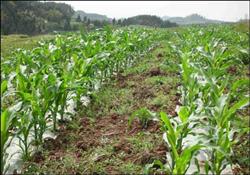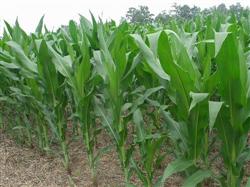Matters needing attention in wheat planting
Wheat, as one of the most important grain cash crops in northern China, has a large range of planting in the north, and planting wheat has high economic value. After a year of hard work, farmers who grow wheat on a large scale rely on their output to gain their own economic benefits. But most of the time the yield is not satisfactory, so how to plant to make the wheat get high yield? Today, the editor brought some points for attention in wheat planting. Let's take a look at it.

1. Soil
Before planting, we should choose a good soil, the soil is fertile, the soil layer is deep and soft, which is the most suitable soil for wheat growth. Then prepare the soil again to make the soil softer and do a good job of leveling and sterilizing it. After ploughing, expose to the sun for 5-7 days, and then apply sufficient base fertilizer. Farm manure can be used to mix it evenly with soil to enhance soil fertility.
2. Seed selection
Variety is the basis for ensuring high yield. when selecting planting varieties, we should choose varieties that are disease-free and harmless, have strong disease resistance and high yield. If you choose the right variety, you can get twice the result with half the effort. If you are not sure whether you are carrying germs, then you should soak and disinfect the seeds before planting, or spray carbendazim and other agents to kill the germs, and determine the dosage according to the quantity.
3. Sowing seeds
Sowing time is also required, because wheat seed germination requires certain conditions, so sowing time should be determined according to the changes in the weather. If sowing prematurely makes the wheat unable to adapt to the surrounding environment and affects the germination rate, it may make the seeds prone to diseases and insect pests if it is too late. Also pay attention to the amount of sowing, according to the planting area to control the amount of sowing, do not plant too dense.
4. Anti-lodging
Wheat is a tall crop, which is prone to lodging when it grows to a certain height, so it is necessary to prevent lodging. You can choose lodging-resistant varieties, or prune wheat when it is not particularly high, do a good job in controlling prosperity, and spray multiple frustrations on plants, which can be effectively prevented. More application of jointing fertilizer can control the formation of ear drop, which is beneficial to the weight gain of wheat.
5. Moisture
Wheat is neither drought-resistant nor waterlogged, so we should do a good job of drainage and irrigation between the fields. When the wheat grows to the filling stage, it is most in need of water. At this time, we should make sure that the wheat needs enough water to keep the soil moist. However, in case of overcast and rainy weather, the stagnant water between the ground needs to be discharged in time, otherwise too much water may lead to rotten roots and affect nutrition absorption and transportation.
6. Disease control
Disease control is a problem that all farmers need to pay attention to. We must do a good job of prevention in advance. Proper spraying of foliar fertilizer on leaves can effectively control the occurrence of diseases and insect pests, replenish water and increase yield. Strengthen the management among the fields, spray and disinfect the wheat regularly and quantitatively, and deal with the diseases in time to prevent the further deterioration of the diseases.
Many peasant household friends feel that they have ways to prevent and control all kinds of diseases and insect pests, so the prevention work has not been done well, but in fact, when diseases and insect pests occur, wheat has already suffered certain injuries and losses. Therefore, it is necessary to strengthen management when planting, which can not only promote growth, but also effectively control diseases and insect pests. That's all for today's introduction, if you want to know more related information, please continue to follow us!
- Prev

Key points of drought-resistant sowing and planting of Spring Maize
The main results are as follows: 1. The basic principles of basic fertilizer spring corn are as follows: base fertilizer, topdressing, farm fertilizer, chemical fertilizer, nitrogen fertilizer, phosphate fertilizer, ear fertilizer and grain fertilizer. Base fertilizer should generally account for about 70% of the total fertilization, and most phosphate fertilizers should also be applied in combination with base fertilizer, usually in combination with autumn ploughing in the first year. ...
- Next

Key points of Field Management of Spring Maize in the later stage
1. Choose a good variety. Selecting a good variety is the key to a bumper corn harvest, and we must select the varieties introduced by the formal agrotechnical departments, or those approved by the provincial seed approval committee. What we introduced in 2006 is the "Changxin No.1" introduced by Danling County Changxin seed Co., Ltd. Mu.
Related
- The first cup of black tea in spring, the flavor and history of tea gardens in Kenya, Africa
- The computer can not only choose potatoes, but also grow tea rice. AI will grow winter oolong tea champion.
- It is not only the inflated tea bitten by insects, but also engraved with the four seasons tea in Beipu.
- The Oriental Beauty Tea Festival in Zhuxian County takes the stage at the weekend to experience the plus-size feast of oil tea.
- & quot; Oriental Beauty Tea & Exploration of Emei in Hsinchu, the hometown of quot;
- The new variety of strawberry "Tainong 1" dessert is the first choice with mellow aroma. Crimson gorgeous
- History of Tea in Taiwan: from Wild Inner Mountain to Export Tea Garden
- Two types of Taiwan Oriental Beauty Black Tea won the British three-Star Award for Childhood Tea Xiang Zhang Jiaqi changed from pilot to champion tea maker.
- Banana species and varieties: the planting history of Taiwan Xianren banana and dwarf banana is long, is banana disease resistant?
- Coffee planting Technology: Qianjie Coffee from Seedling to harvesting

